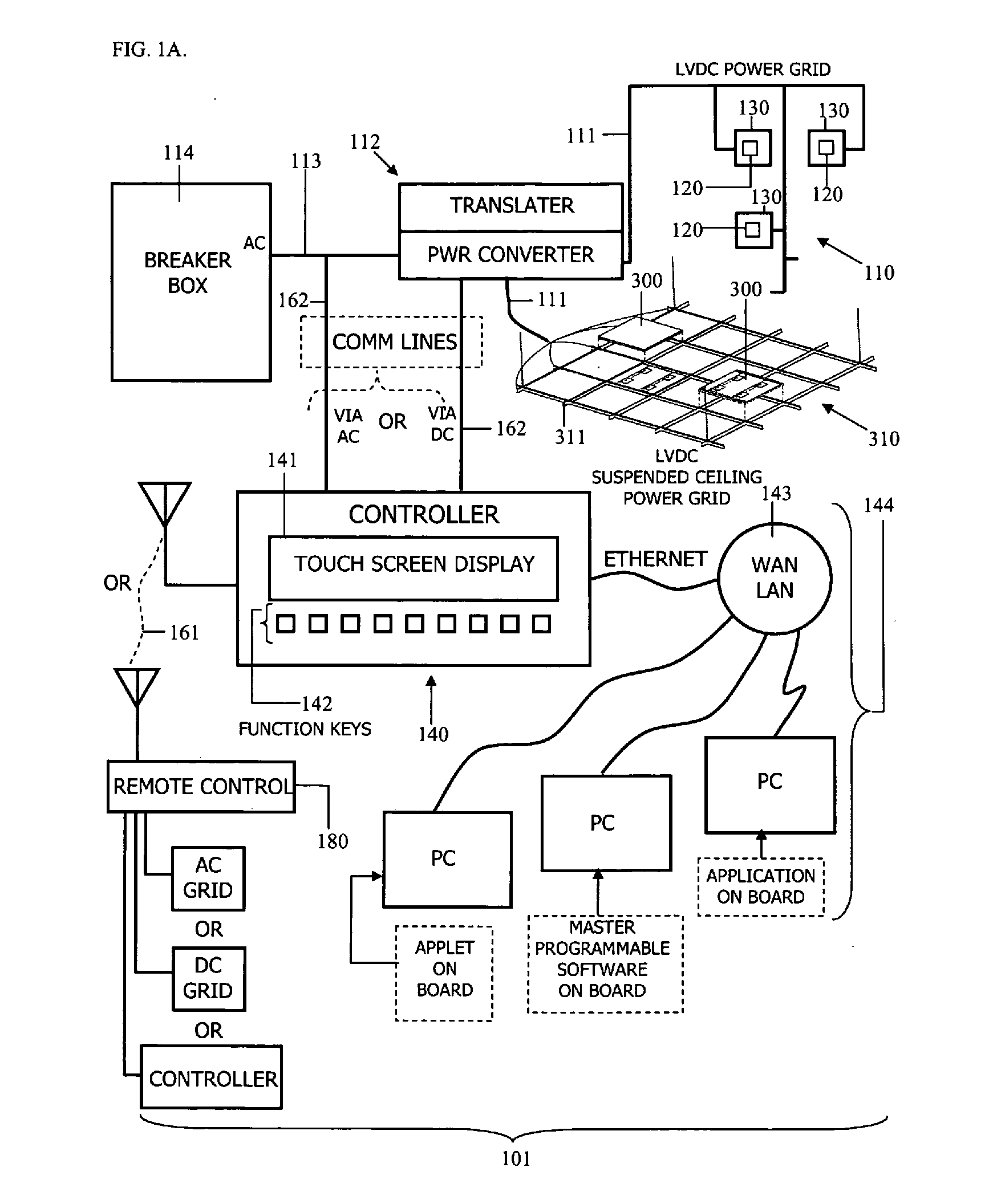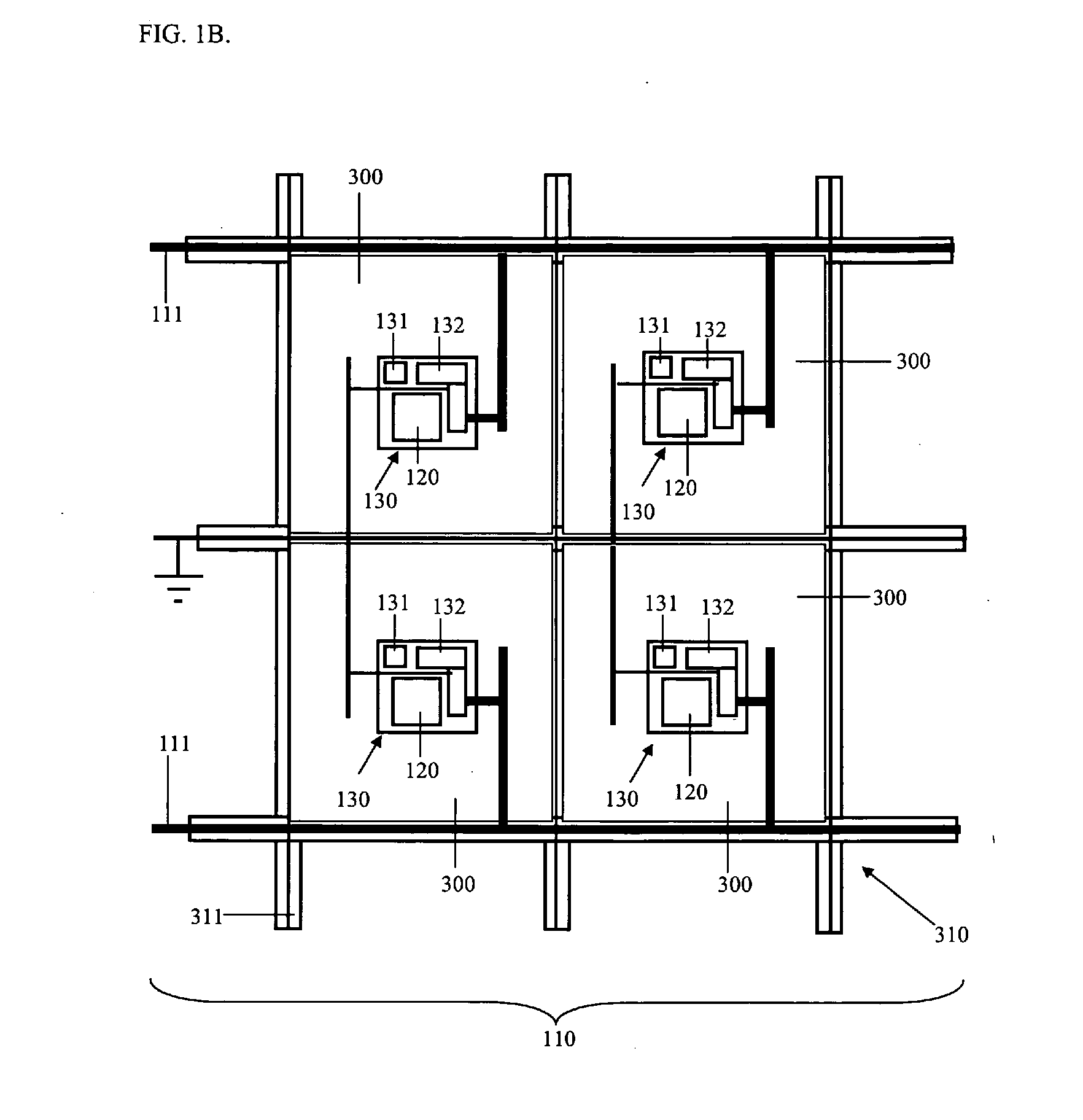Distributed lighting control system
a technology of lighting control system and distribution system, which is applied in the direction of lighting and heating equipment, lighting support devices, light sources, etc., can solve the problems of difficult control, difficult control, and difficult control, and achieve the effect of reducing the difficulty of adjusting the lighting and controlling the lighting, reducing the difficulty of adjustment, and improving the control
- Summary
- Abstract
- Description
- Claims
- Application Information
AI Technical Summary
Problems solved by technology
Method used
Image
Examples
Embodiment Construction
[0026]The present invention is directed to systems and methods for providing distributed lighting control. The Distributed Lighting Control System (DLCS) 101 enables numerous luminaire 120s of different types and with different capabilities to be installed in varied types of installations without regard by installers as to what type of wire has been pulled or (except for the overarching concern of not overloading breakers and circuits) as to the details of what locations the wire has been pulled. The intelligence embedded in the controller and in the luminaire 120s themselves enables an unprecedented level of system control and enables that control to be instantiated post-installation. This dramatic shift in lighting configuration and installation dramatically reduces cost and complexity while increasing performance and flexibility.
[0027]FIG. 1A illustrates one embodiment of the DLCS 101. In general, the DLCS 101 comprises a power grid 110, at least one luminaire 120 connected to th...
PUM
 Login to View More
Login to View More Abstract
Description
Claims
Application Information
 Login to View More
Login to View More - R&D
- Intellectual Property
- Life Sciences
- Materials
- Tech Scout
- Unparalleled Data Quality
- Higher Quality Content
- 60% Fewer Hallucinations
Browse by: Latest US Patents, China's latest patents, Technical Efficacy Thesaurus, Application Domain, Technology Topic, Popular Technical Reports.
© 2025 PatSnap. All rights reserved.Legal|Privacy policy|Modern Slavery Act Transparency Statement|Sitemap|About US| Contact US: help@patsnap.com



